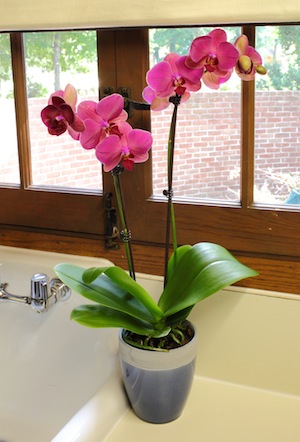
 Orchids don’t absorb nutrients through soil like many other houseplants. In their natural habitat, orchids live on trees and trap animal and plant matter and soil particles blown through the wind and absorb these nutrients through their roots. Though your Just Add Ice Orchids do not require regular fertilizing, doing so from time to time can help the orchid maintain optimum health and bloom.
Orchids don’t absorb nutrients through soil like many other houseplants. In their natural habitat, orchids live on trees and trap animal and plant matter and soil particles blown through the wind and absorb these nutrients through their roots. Though your Just Add Ice Orchids do not require regular fertilizing, doing so from time to time can help the orchid maintain optimum health and bloom.
1) How often should you fertilize? We recommend fertilizing once a month while the blooms are gone, but it is not necessary constantly.
2) What should I look for in a fertilizer? A balanced fertilizer should contain equal parts of nitrogen, phosphorus and potassium (this is often labeled 20-20-20). You should not use this fertilizer at full strength; instead, dilute it with an equal amount of water before adding it to your orchid.
3) Why should my fertilizer contain nitrogen, phosphorus and potassium?
4) How do I apply the fertilizer? This is the most important step. We recommend doing this over a kitchen sink so the fertilizer can drain through as it's being applied. Add the fertilizer to a pitcher with a narrow spout, lift the leaves and steadily pour in the fertilizer over the bark. DO NOT POUR THE FERTILIZER OVER THE LEAVES. Once you’ve poured all of the fertilizer into the pot, let it drain to remove any extra fertilizer. Only water your orchids on the weeks you don’t fertilize your plant.
1) Fertilize your orchid every other week after it ceases to bloom, using the above steps 1-4.
2) Store your orchid in a room between 55 - 65 degrees F until a new flower spike pushes through.
3) Once the new flower spike appears, place the orchid in its original location and water as usual.
The right fertilizer can maintain your orchid’s health and help to ensure a strong and vibrant bloom. For a more in-depth guide to orchid reblooming, download Your Personal Guide to Orchid Reblooming today.

Copyright Just Add Ice® Orchids 2023